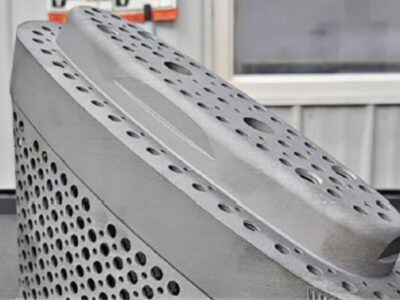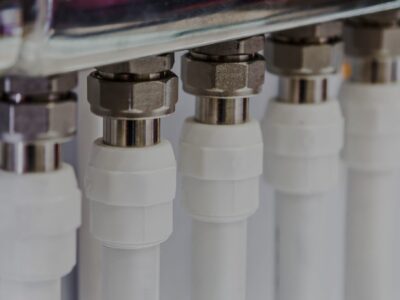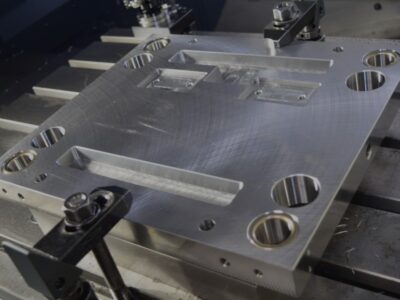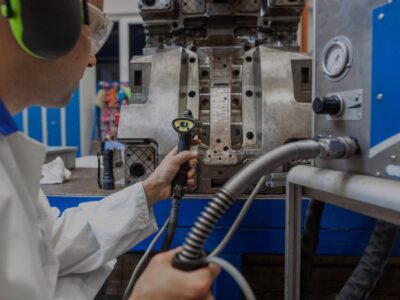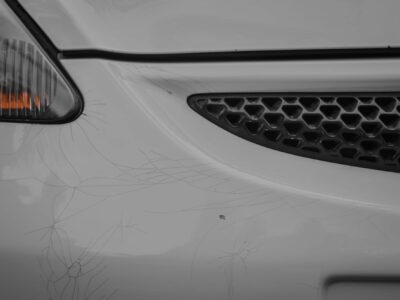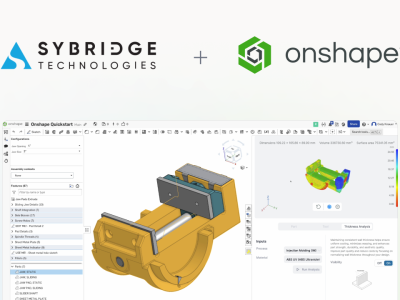Originally published on fastradius.com on July 11, 2022
Injection molding involves melting and injecting plastic into a mold, cooling it, and ejecting the finished product. Injection molding is used across various industries, but it’s particularly instrumental in the medical supply and device industry, as it can produce large quantities of accurate, high-quality parts and is compatible with many medical-grade plastics.
Common Medical Applications of Injection Molding
Injection molding offers high levels of accuracy, compatibility with FDA-approved materials, the ability to achieve ISO 13485 compliance, and a low cost-per-part, making it ideal for many medical applications. Medical injection molding can be used to create components for dental X-ray equipment, catheter locks, diagnostic testing kit components, personal protection equipment, microfluidic devices, and surgical and drug delivery equipment.
Other medical plastic injection molding applications include orthopedics, syringes, Petri dishes, and pipettes, as well as parts, housings, and casings for medical devices, electronic devices, and computerized medical equipment. Injection molding is ideal for situations that require high volumes of durable, accurate, and sterilization-friendly parts.
The Benefits of Using Injection Molding in the Medical Industry
Injection molding has plenty to offer the medical industry, including:
Cost Efficiency
While creating tooling requires a significant amount of time and money upfront, injection molding is extremely cost-effective at high volumes. Bulk injection molding will spread the tooling cost across thousands of parts, lowering the overall cost-per-part.
High Levels of Accuracy
Injection molding is known for its accuracy and repeatability, making it perfect for the medical industry, where the slightest mistake can cause a part or device to fail. Injection molding allows companies to quickly create hundreds or thousands of identical parts while providing exceptional accuracy and adhering to tight tolerances.
A Wide Range of Compatible Materials
Compared to all other manufacturing processes, injection molding has one of the widest material selections. While some materials aren’t suitable for use in the medical industry, there are still many materials capable of meeting the industry’s various requirements and regulations.
Superior Strength, Durability and Mechanical Properties
Injection molded parts are quite strong and durable. They may also be resistant to vibrations, impacts, and harsh environments. Some are resistant to heat, meaning they can be easily and repeatedly sterilized via an autoclave without suffering any damage.
Comparing Medical Injection Molding Materials
- Polyethylene (PE): This thermoplastic has a high molecular weight and is perfect for use in wearable medical devices. However, you can’t sterilize PE with an autoclave, as it’s less resistant to heat.
- Polypropylene (PP): PP is highly heat resistant, making it ideal for parts that will be regularly sterilized by an autoclave. PP is also tough, lightweight, affordable, and resistant to radiation, chemicals, electricity, and organic solvents.
- Polystyrene (PS): PS offers good impact resistance and dimensional stability. It’s also non-toxic, inexpensive, odorless, FDA-compliant, and lightweight, making it great for Petri dishes and test tubes.
- Polyetheretherketone (PEEK): PEEK is highly resistant to chemicals, radiation, and wear. Since PEEK is also incredibly resistant to high temperatures, it’s great for sterilization and injection molding. PEEK is often used in orthopedic devices, dental implants, healing caps, and spinal fusion devices.
- Polycarbonate (PC): This strong yet flexible engineering-grade thermoplastic offers high vibration, heat, impact, and UV light resistance. PC offers good dimensional stability and is often used in medical devices.
Determining Which Material is Best for Medical-Grade Products
There are plenty of materials suitable for medical injection molding, but each medical-grade plastic has its own advantages, and each will perform differently. In addition to opting for a contaminant-resistant material that can be sterilized, consider:
- Durability and strength: In the medical industry, using an easily breakable material isn’t very practical. In fact, it can be both inconvenient and dangerous if it breaks at a crucial moment, so make sure to opt for a material that’s resistant to shattering and breaking and offers the durability and strength needed for its intended application.
- Operating conditions: Before deciding which material to use, you’ll need to consider the application environment. For example, if the part is repeatedly sterilized and subjected to high heat, a material resistant to high temperatures is needed, such as polypropylene. On the other hand, if a part needs to be flexible and durable, use a strong material like polycarbonate, which is resistant to vibrations, abrasions, and heat.
- Ease of use: When selecting a part’s material, consider who will use the part and how. After all, a heavy, non-ergonomic surgical instrument would only hinder a surgeon from doing their job. A light, ergonomic surgical instrument that’s functional and easy to sterilize can make all the difference.
Compliance: Adhering to FDA Regulations and ISO Standards
In addition to the use-case and material-specific considerations that you need to make when manufacturing injection molded parts and products for the medical industry, there’s also the matter of compliance. The medical industry is highly regulated. This means that any parts or products that you make, whether through injection molding or another manufacturing process, must adhere to FDA regulations, as well as receive ISO certification and comply with the corresponding standards.
- FDA regulations: The FDA has strict regulations regarding the cleanliness and sterility of implantable devices, medical instruments, other medical components, as well as materials used in cleanrooms. This means that you’ll need to ensure that your chosen material is capable of meeting those standards. Plus, you’ll need to pay attention to the injection molding process itself, as you or your manufacturing partner will likely need to pass an audit to receive medical-grade approval.
- ISO certification and compliance: You’ll also need to ensure your medical components meet ISO standards. Meeting ISO 13485:2016 standards is a must, but you may also need to meet other standards. In some cases, you may need to demonstrate compliance with Class I, II, or III requirements or ISO 10993 and other biocompatibility standards.
Medical Industry Solutions From SyBridge
Injection molding is a precise, cost-efficient manufacturing method that results in high-quality parts and is capable of meeting the strict standards of the medical industry. There are countless applications for injection molding in the medical industry, but some materials are better suited for specific situations than others. To ensure you have the best design paired with the right material and can meet strict regulatory requirements, consider working with an injection molding expert.
At SyBridge, our expert engineers can help you refine your design and select the right material for your component. You can also access instant DFM analysis and more by uploading your designs to identify potential design pitfalls, reduce unnecessary production slowdowns, and lower your cost-per-part.
Create an account or contact us today to discover what SyBridge can do to help you make injection molded parts for the medical industry or other applications.

